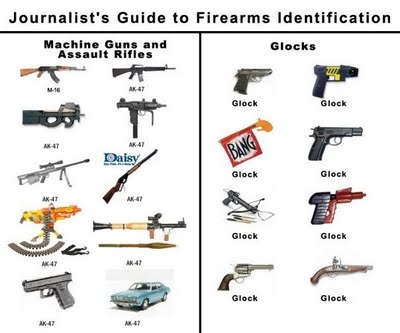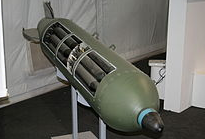Gunfight and Glock: Book Reviews
I’ll be honest, I haven’t been able to bring myself to read much about Sandy Hook. I know roughly what happened, but that’s as far as I can get, because this is such an abominable failure of a society to keep its most vulnerable members safe. That’s not just Sandy Hook, of course - it’s every massacre. And nothing ever happens in the aftermath - no real efforts to curb gun violence, nothing that expands mental health care - and I’m with the Onion here.
But maybe I’m being too cynical and defeatist. Maybe this, this finally, is what will mobilize America to demand change from ourselves and our leadership; to undercut the grip the gun lobby has on politics; to recognize that there is a middle ground between arming everybody and total disarmament. So for those who are getting going on this issue and need some good background reading, and also because G&L is collecting Best Books We Read in 2012 (contribute on Twitter with #bestbooks!), I wanted to post two book reviews/opinions I’ve been sitting on for way too long.
NB: these are snarky reviews, as serious book reviews can be found in other places, and nobody reads serious book reviews, and I actually think Gunfight is worth reading, and if I can convince you to read it by being flip, then it was worth it. But I do not take the issue of gun violence lightly, and I hope this will not be read as making light of the tragedies of the past week/month/year/decades (gun violence is epidemic, and it is vital not to decontextualize any one incident).
Gunfight: The Battle Over the Right to Bear Arms In America, by Adam Winkler (2011, W. W. Norton & Co.).
Should I ever be asked to explain the history of America’s relationship with guns, I intend to hand over a copy of Adam Winkler’s outstanding Gunfight. On the surface, Gunfight is the story of the 2008 Supreme Court case District of Columbia v. Heller, which ruled DC’s ban on handguns unconstitutional and settled the question of whether the Second Amendment is an individual right or not. And while I find the term ‘legal thriller’ to be an oxymoron, Winkler gives life to the characters involved in the DC v. Heller case as it worked its way to the Supreme Court. So that’d be reason enough to read Gunfight; the strategic maneuvering around the case is pretty interesting.
But more usefully, Winkler traces the history of the tension between gun control and gun ownership in America, using the 2008 case as a backdrop. He gives a very readable, founding fathers-onward march through America’s weird love affair with guns. He covers the extensive regulations around guns in the colonial and post-colonial periods, providing an alternate (and well-researched) history that undercuts many of the “but the founding fathers said we could have guns!” arguments that seem to still hold water these days. Because it’s not just that the guns of yesteryear were slow to load and broadly inaccurate; they were also locked up most of the time. Likewise out in the Wild West; you gave your guns to the sheriff when you got to town, and you got them back on your way out.
Given the heat the NRA’s taken in the last week, it’s particularly instructive to look at the organization’s history, and Winkler does an excellent job here (and for those with short attention spans, so does Toobin). Once upon a time, the NRA wasn’t the trade association it’s essentially become (okay so technically the National Shooting Sports Foundation is the trade association. But the NRA’s funding comes mainly from gun manufacturers, and the NRA’s lobbying wing is the most active in the industry, and if there’s one thing gun manufacturers want, it’s to sell more guns, which means loosening laws and creating fear that those laws will be tightened ANY MINUTE BUY NOW OBAMA WANTS TO TAKE YOUR GUNS AWAY! It’s… weird. And really effective.)
Anyway! Once upon a time! Back in the 1930s! The NRA wasn’t like that. They actually lobbied for gun control. Karl T. Frederick, a past president of the NRA, was a conservationist and a crack shot who once said, “I do not believe in the general promiscuous toting of guns. I think it should be sharply restricted and only under licenses.” (210-211) Madness! And none of the NRA’s advocacy was about the Second Amendment, because it wasn’t seen as a particularly strong argument against gun laws. Ah, the glorious 30s. Except for the Great Depression and the start of World War II, that was a real good decade, I tell you.
And then the 1950s came along (whatever, 1940s, nobody loves you), and the soldiers came home and there were just lots of cheap guns left over after WWII, and while there were purchasing restrictions, they weren’t that onerous, and that’s when proliferation in America really kicked off. And then we had the 1960s, with the social upheavals thereof, and crime started to rise, and people started to arm themselves more for self-defense than for hunting. The NRA’s membership started to shift from hunters and recreational shooters to self-defense-oriented folks.
And then, in 1976, the executive vice president and de facto head of the organization decided to relocate the NRA headquarters out of Washington, DC, and get out of the lobbying business in favor of outdoorsman activities and environmental awareness programs. This did not sit well with the self-defense crowd. Harlon Carter, the head of the NRA’s Institute for Legislative Action, and Neal Knox, who thought the assassination of MLK, Jr. was a government plot to advance gun control, engineered a coup that turned the NRA into the organization that it is today. Oops. Moral of the story: know your bylaws.
Glock: The Rise of America’s Gun, by Paul M. Barrett
For my birthday, some very dear friends bought me Paul Barrett’s new book, Glock: The Rise of America’s Gun after we wandered into his talk at Politics & Prose. And I wanted to like it, because hey, birthday present! Books about guns! This has been a winning combination in the past. But unless you care a lot about marketing strategies or are really into reporters’ notebooks, just borrow this one from the library.
Unfortunately for Mr. Barrett, the history of Glock, Inc. doesn’t span centuries, as American Rifle does, or involve global domination, as The Gun does, so there’s just not that much to write about that hasn’t been well-covered elsewhere. Here, I’ll sum up Glock:
- In the early 1980s, a hard-working Austrian named Gaston Glock comes up with cheap semi-automatic pistol that holds 17 rounds at the same time American law enforcement begins to realize that revolvers are a pain to reload, especially when you’re getting shot at. Smith & Wesson fails to notice that revolvers are on their way out of law enforcement.
- Glock hires a really, really good sales guy, Karl Walter. Really Really Good Sales guy is really really good. Boy, is he good. Strippers! Free training! Discounts for law enforcement and Hollywood!
- Hard-working Austrian and Really Really Good Sales Guy manage to get their guns in the hands of law enforcement. The rest of the firearms industry, by contrast, twiddles their thumbs and looks sad.
- Gun control advocates kick up a big fuss over the magazine size, light trigger pull, alleged undetectableness, whatever else they can find. Gun nuts buy them by the boatload. Some more pouting happens on the part of other manufacturers.
- Really Really Good Sales Guy gets fired for being too good. Another sales guy is hired who eventually hires somebody to kill Gaston Glock. Assassination attempt fails. Exeunt.
There. That’s the book (okay, maybe there’s more, but I gave up around p200). It’s an interesting story, but it’s not 267 pages worth of interesting, and the writing isn’t particularly compelling. In short, Glock is synonymous with gun in America for the same reason Xerox is both a brand and a verb: good marketing and slow-footed competition. Glock holds this special place in the American psyche simply because it hit the ground running with a novel product and some smart business practices in the 80s; it captured the law enforcement market early in its existence, giving it a way to quickly scale up production and a stamp of approval for other marketing efforts.
Glock seems to be the work of a reporter who thought it’d be cool to write about guns and needed an excuse to do some research. And there’s a lot of research. To his credit, Barrett did his homework, and he’s got a lot of facts and figures and dates to report. Oh, and anecdotes. So very many “and then I talked to this other random person” anecdotes. There’s also the irrelevant story of Barrett learning to shoot by… entering a competition? Okay, whatever. There’s just so much fluff, but I suppose that at 267 pages with wide margins and large font, any editing for fluff would’ve made this too short to be worth publishing as a book.
Glock tries to situate itself in the pantheon of Definitive Books About Guns, but it’s better suited to the business section. Pass.
***
I know Americans aren’t a particularly history-oriented bunch, by and large, but the history of gun laws in America is one that needs to read and internalized. Many of the proposals and op-eds I’ve read in the last week are, frankly, rehashes of history. This is not to dismiss them; rather, I simply encourage anybody writing or reading or lobbying or agitating or whatever you’re doing around the effort to curbing gun violence and/or proliferation to do your homework. Start with Gunfight. Skip Glock.










